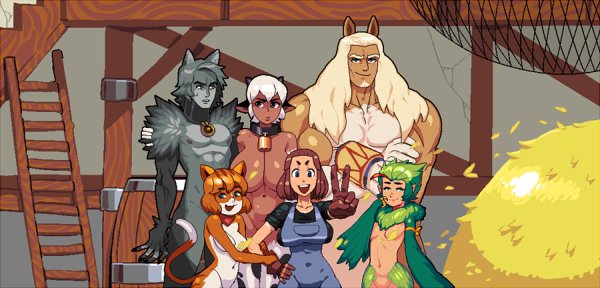Monster Studies
Notes from a monstrous workshop, CEEGS 2017
This year’s CEEGS conference, which took place the last September week of 2017 in Trnava, Slovakia, hosted the Games and Monstrosity workshop, likely the first of its kind in the history of game studies. Daniel Vella and myself acted as organizers and moderators and we had five more participants, each with a distinct view of monsters in games (see program here).
In our opening presentation, me and Daniel attempted to sum up existing research on games and monstrosity and outline several directions in which to make sense of monstrous content in games.
These included:
- Formal analysis – looking at the functions of monsters as enemies within the formal structure of games
- Design approach – looking at the innovation and lack thereof in the design of mechanics of monsters
- Cultural studies approach – analyzing the functions and impact of monsters in cultures (focusing primarily, but not exclusively on their representational properties)
- Media history and archeology – tracing the histories of video game monsters from shooting galleries and Dungeons & Dragons to digital games
- Monster aesthetics, which can be made sense of using several different concepts
- The sublime and unknowable, which in Kant’s words, would “do violence to the Imagination”
- The grotesque, in which the monstrous poses as a site of resistance, and is link to the carnivalesque
- The uncanny, or the becoming-supernatural
- The fantastic, which tentatively “cannot be explained by the laws of this same familiar world”, as Todorov has put it
- Monstrosity and ethics – looking at the monster as the other, the scapegoat and the one who it is permissible to destroy
- Reception of monstrosity – looking at how players experience and interact with monsters
We are making our slides (including an admittedly non-exhaustive literature review) available here.
In the first workshop presentation, Ivan Davidov (University of Vienna) looked at the zombie as a metaphor for in-game NPCs, many of whom may strike us as lifeless, as we are searching for “agency behind the flesh”. This may lead us to the idea of a zombie as a prototypical computer-controlled agent. Both NPCs and zombies are unconscientious agents, who purposelessly wait until a player shows up. I especially enjoyed Ivan’s analysis of the comic elements of Plants vs. Zombies – according to Ivan, the seemingly absurd idea that zombies can take purposeful action is an important part of the game’s jokes.
Francesca Borg (University of Malta) talked about islands in games and the monsters that inhabit them, drawing from existing scholarship on islands. Islands have been used in Western culture as settings for both romance and horror. An island as a whole can be considered a supernatural place potentially full of monsters. I find this analogy very useful because of its connection to the player versus environment model of games. Games tend to create a closed-off place of player challenge and makes perfect sense for it to be inhabited by monsters.
Marta Kania (University of Lower Silesia, Wroclaw) presented about The Dream Machine, a clay- and cardboard-mation indie adventure game. Marta has brought attention to an important question that narrative-oriented adventure games pose – what is the difference between how the player character perceives of the monster as opposed to the player? In this case, the monster is the machine itself. In the course of the game, the player character must accept its weird logic, eventually becoming partially “monstrous” himself.
That was also the focus of the contribution by Diana and Vlad Melnic (Babes-Bolyai University, Cluj-Napoca, Romania). They argued that there is great potential for “monstrous” gameplay when players commit hideous acts within the game while struggling to maintain their real-life identities. They demonstrated their approach on the “Taste of Death” quest in The Elder Scrolls: Skyrim, in which the player character is supposed to commit an act of cannibalism, and gave examples of the players’ disgusted reactions.
The final presentation by Justyna Janik and Magdalena Cielecka (Jagiellonian University, Krakow) was perhaps the most transgressive as it centered on sex with monsters in relatively fringe, but immensely interesting titles such as Sakura Dungeon or Cloud Meadow. Justyna and Magdalena have shown that monstrousness and the “demonic-harem” trope can be used to justify in-game sexual encounters. Other games use monstrousness as a marker of inclusivity and diversity of acceptable sexual behavior. Yet others like the adult farming sim Cloud Meadow portray sex with animals (and monsters) as a pragmatic act resulting in the breeding of useful hybrids.

The ensuing discussion, which was joined by many in the audience, and included references ranging from BDSM to Tolkien, proved that monsters and monstrosity are a useful heuristic to look at particular games and games as a medium in general. Enemies, the player and the game can all be conceptualized as monstrous, allowing us to make interesting observations about the relationship between them. Let me share some of the ideas that resonated with me personally:
- There is a thin or no line between monsters and cyborgs.
- Acquiring special abilities and skills may be portrayed in games as becoming monstrous (as in the example of BioShock).
- The monster may be necessary for the idea of a hero, at least in ancient myths and legends and much of popular culture.
- Monsters are important political tools, justifying exclusion of various groups of entities. The “Shrek effect” of the cute monster may, on the other hand, signal inclusivity
All in all, the workshop provided a lot of food for thought and helped us explore this incredible rich topic. Let’s hope it’s not the last one!
P.S. At one point, I became so immersed in the topic that I stopped taking pictures of the presenters. Sorry!
[Copied from the <a href=”https://gta.w.uib.no/”>Games and Transgressive Aesthetics blog</a>]





Leave a Reply